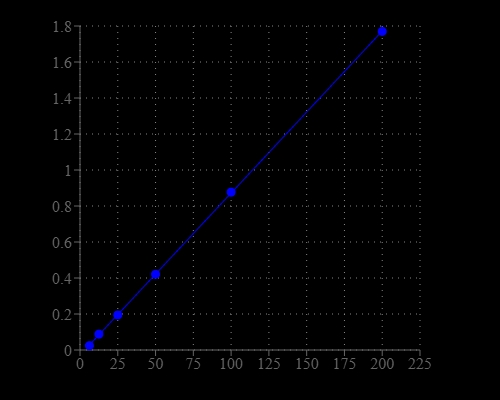Amplite® Colorimetric Pyruvate Assay Kit
Pyruvate is an important chemical compound in intracellular metabolic pathways. It is derived from metabolism of glucose known as glycolysis. One molecule of glucose breaks down into two molecules of pyruvate, which supplies living cells energy through one of two ways. When oxygen is present (aerobic respiration), pyruvate is converted into acetyl-CoA by pyruvate dehydrogenase which enters citric acid cycles (also known as the Krebs cycle) to generate ATP. When there is insufficient oxygen is available, the pyruvate is broken down anaerobically, creating lactate in animals and ethanol in plants and microorganisms. Abnormal levels of pyruvate, or concentration ratio of lactate-to-pyruvate may be linked to liver disease or metabolic disorders and it is a diagnostic measurement in patient's clinical and other laboratory studies. AAT Bioquest's Amplite® Fluorimetric Pyruvate Assay Kit offers a sensitive fluorescent assay for quantifying pyruvate in biological samples. It utilizes an enzyme coupled reaction that releases hydrogen peroxide, which can be detected by pyruvate sensor in a fluorescence microplate reader.


| Catalog | Size | Price | Quantity |
|---|---|---|---|
| 13821 | 200 Tests | Price |
Storage, safety and handling
| H-phrase | H303, H313, H333 |
| Hazard symbol | XN |
| Intended use | Research Use Only (RUO) |
| R-phrase | R20, R21, R22 |
| UNSPSC | 12352200 |
Instrument settings
| Absorbance microplate reader | |
| Absorbance | 575 nm |
| Recommended plate | Clear bottom |
Contact us
| Telephone | |
| Fax | |
| sales@aatbio.com | |
| International | See distributors |
| Bulk request | Inquire |
| Custom size | Inquire |
| Technical Support | Contact us |
| Request quotation | Request |
| Purchase order | Send to sales@aatbio.com |
| Shipping | Standard overnight for United States, inquire for international |
Page updated on January 8, 2026
